Union Depot (1878-1915)
Introduction
Author-Uploaded Audio
Kansas City historian Bill Worley shares the history of Union Depot and the West Bottoms prior to the construction of Union Station
Text-to-speech Audio
After Hannibal Bridge was built in 1869, Kansas City needed a larger train station to manage growing railroad traffic while supporting passengers travel. City leaders saw this project as an opportunity to impress travelers and sought out several land developers, architects, and others in the construction trades to help create a grand new depot. The city purchased a piece of land on Union Avenue across from the bridge for this purpose and invested so heavily in the project that some doubted whether the new Union Depot, which was completed in 1878, would ever reach capacity. The project was a success and supported Kansas City's claim to being a center of commerce until it was replaced by Union Station.
Images
Union Depot as seen from Union Avenue, 1895
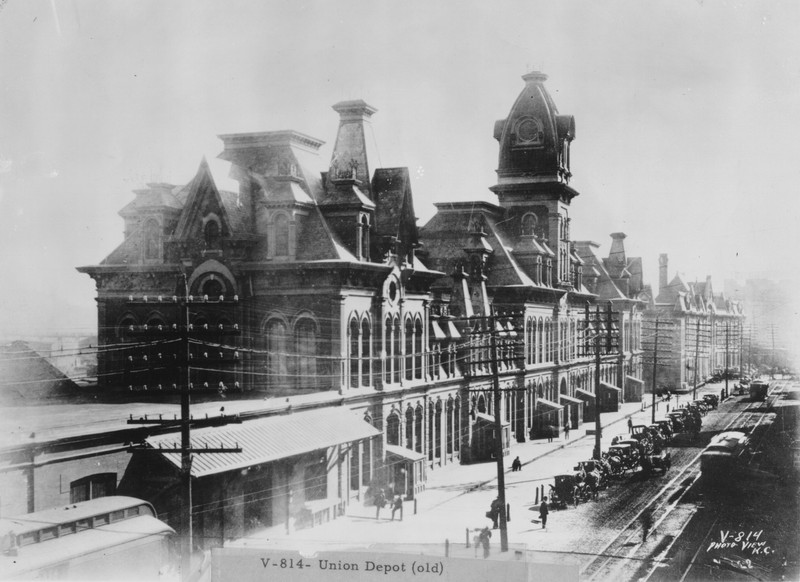
Union Depot up close, circa 1880.
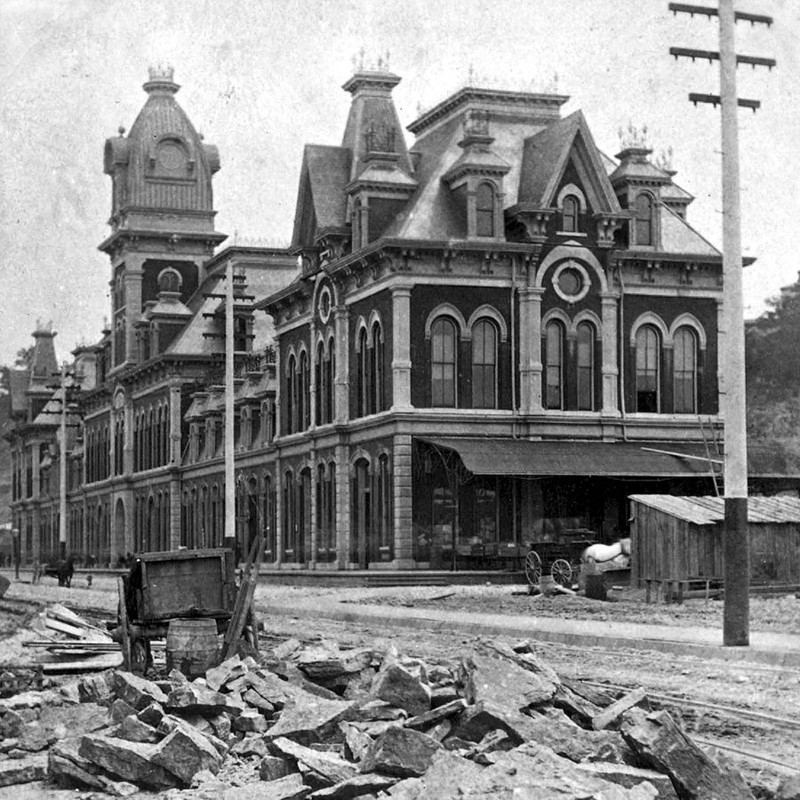
The Missouri River, Hannibal Bridge, West Bottoms, and Union Depot, 1888.
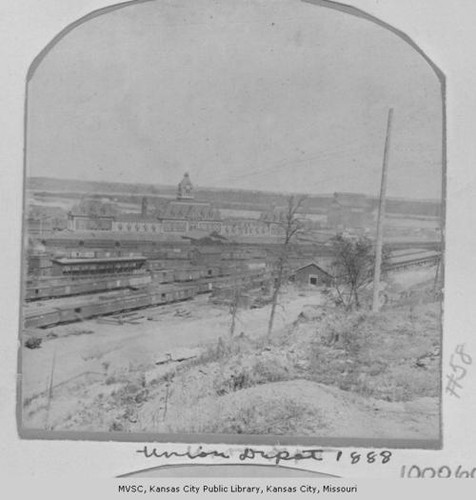
The inside of the Union Depot was filled with six feet, seven inches of standing floodwater.
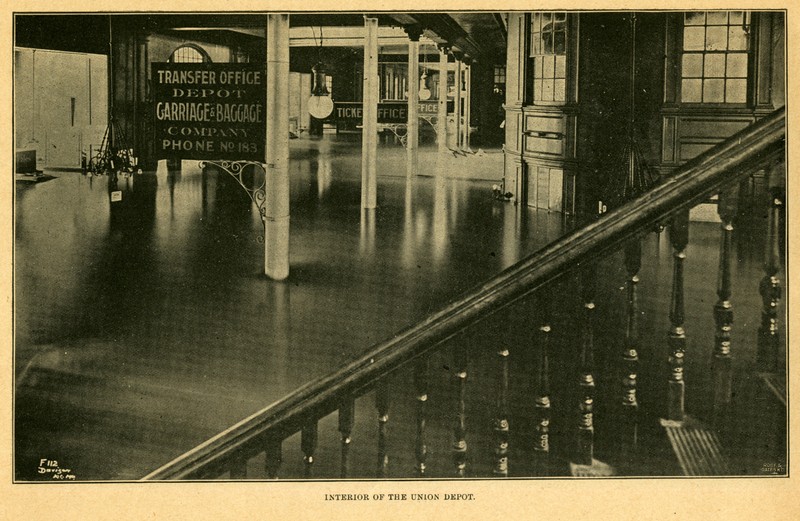
People boat in the streets of the West Bottoms after the 1908 floods.
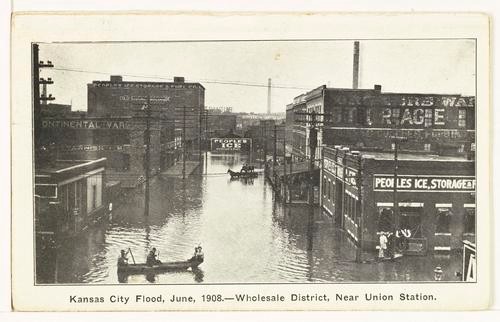
A November 2022 photo of the location of the former depot facing north
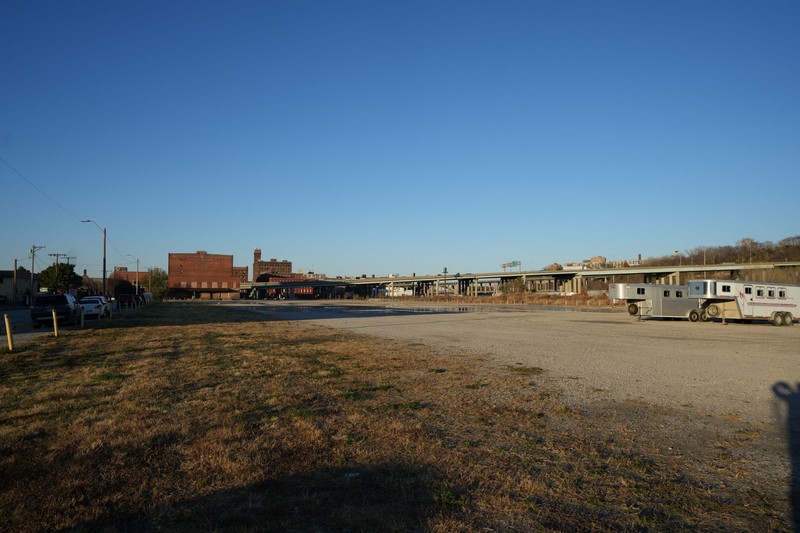
Backstory and Context
Text-to-speech Audio
Union Depot had a unique design. It was so unique that most weren't sure what architectural style it was supposed to be. Aspects of many architectural traditions could be seen, including "Italian-Renaissance to French Empire, Gothic, and Victorian," leading some to believe it was just a combination of all or several of those styles. The building boasted "steeples, towers, turrets, arches, cupolas, and detailed ornamentation. It was topped off by a 125-foot, four-sided clock tower." It was wider, taller, and more ornate than most area buildings, and as such, it stood out, towering over the West Bottoms with its elaborate design.
Opinions on its one-of-a-kind style ranged from praising it, calling it the "Pride of Kansas City," to a "monstrosity." Some thought it was too ambitious for a city whose population had only passed 10,000 the decade before and still only reached 60,000, and it was hard for them to imagine that the town would ever grow to need such a huge station. They called it the "Jackson County Insane Asylum" for its "crazy" size, intricate, often extreme details, and as a jab to its builder, who also built a mental hospital in Topeka.
No one could have predicted that the population of Kansas City would more than double just another decade later. Kansas City's population shot up to 132,000 by 1890. This led to a considerable increase in traffic through Union Depot, which overwhelmed the station. Before long, the West Bottoms was crowded and dirty. People complained about the Depot's lack of space and its proximity to "West Bottoms saloons, cheap hotels, brothels, and the stench of the Stockyards."
The last straw for the Depot came after the turn of the century. With the 1903 and 1908 floods, the people of the West Bottoms were reminded the hard way just how flood-prone their neighborhood was. The area, built on low-lying land next to the river, was devastated. Many buildings were destroyed, and others were damaged beyond repair. Union Depot was one of the lucky ones, still usable after the waters receded. However, by this point, Kansas City was more than ready to move its railroad traffic through another, drier part of the city. Union Station opened in 1914, and the old Depot was demolished the following year.
Sources
What's Your KC Q? Kansas City's Union Station, The Kansas City Public Library. December 6th, 2018. Accessed October 29th, 2022. https://kclibrary.org/blog/whats-your-kc-q-kansas-citys-union-station.
Spivak, Jeffrey. Union Station, Kansas City. Kansas City, Missouri. Kansas City Star Books, 1999.
Roe, Jason. Bottoms Up - This Week in KC History, KC History Blog. Accessed October 29th, 2022. https://kchistory.org/week-kansas-city-history/bottoms.
Missouri Valley Special Collections - P1 General Photograph Collection
Robert N. Dennis Collection of Stereoscopic Views
Missouri Valley Special Collections -Photograph Scrapbook Collection #1 (P8)
From "The Weekly Implement Trade Journal’s Kansas City Flood Souvenir," 1903, Missouri Valley Special Collections.
Missouri Valley Special Collections - Mrs. Sam Ray Postcard Collection (SC58)
Photo by David Trowbridge
